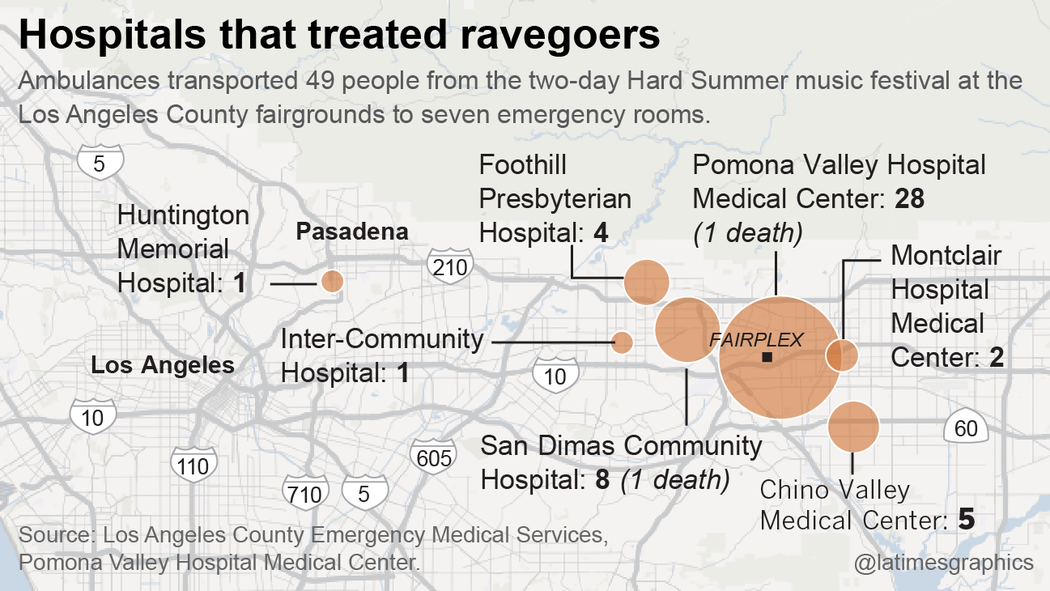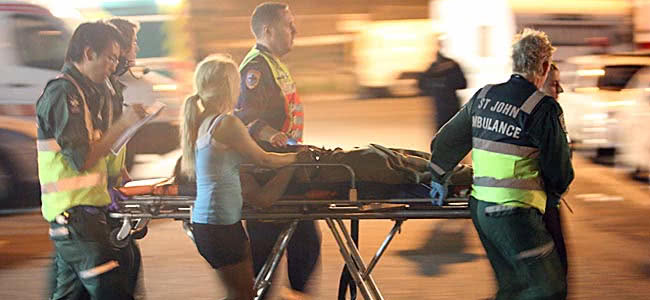It’s sad to admit, but we’re all pretty much used to hearing tales of fatal overdoses during music festivals. It seems at least once a month there’s a story of someone somewhere losing their life after taking the wrong drug at the wrong time.
It’s become so commonplace that it’s entered the national dialogue. As Tone Deaf reports, long-running current affairs program 60 Minutes recently ran a report that put forth a strong case for introducing pill-testing at music festivals and dance parties.
Ask any live music fan and it’s more than likely they’ll have an opinion on the presence of drugs at music festivals and the increasingly controversial ubiquity of sniffer dogs, whose presence many say is not only ineffective, but even deadly.
However, what we rarely get to see is the impact that music festivals and frequent overdoses have on emergency rooms and hospitals. But now a report by the LA Times has shed light on just what goes on behind the scenes at an ER during a festival.
The report comes in the wake of the deaths of two young women during the Hard Summer festival, which recently took place in Los Angeles. One was just 18 years old and the other just 19, both are suspected to have overdosed on drugs.
As the LA Times reports, first aid and emergency response begins months before the event is staged. The Pomona Valley hospital increased staffing and the promoters of Hard Summer, Live Nation Entertainment, set up two primary medical tents at the venue.
Live Nation paid for three emergency room doctors, 13 registered nurses, and 63 emergency medical technicians. However, despite their efforts, which also included sniffer dogs, 49 people were taken by ambulance to seven emergency rooms across the region.
That is an “unusually high number of transports,” Richard Tadeo, assistant director for the Los Angeles County Emergency Medical Services Authority told the LA Times. “I think a lot of people were able to bring in drugs.”
According to Dr. Bradford Hardesty of Pomona Valley Hospital Medical Center, numerous revellers came in with drug-induced seizures, some unable to answer questions because they were drugged. Others were so aggressive they had to be placed under heavy sedation.

Image via LA Times
Ravegoers with high temperatures “get so agitated and confused that they can’t be controlled”, said Dr. Kenneth Nakamoto, an emergency room physician at Pomona Valley Hospital Medical Center. “And we ended up having to admit several to the intensive care unit.”
18-year-old Tracy Nguyen, one of the two women that died, suffered a seizure of unknown length when paramedics responded at 4.45pm on 1st August. She became pulseless as she was rushed to San Dimas Community Hospital, where she was declared dead.
Meanwhile, 19-year-old Katie Dix, went into respiratory and cardiac distress at about 7pm after witnesses saw her drinking alcohol and taking a drug orally. Doctors tried to resuscitate her for half an hour at the Pomona Valley hospital before she was declared dead.
The latest spate of deaths have prompted three emergency room directors to call for an end to large raves in Los Angeles County. According to the LA Times, raves set the scene for so many overdoses that ambulances are forced to spread out as they do after the crash of a packed commuter train.
California Hospital was one of the worst hit, receiving 20 to 30 ambulance runs from every event, Dr. Marc Futernick, emergency services medical director at Dignity Health California Hospital Medical Center in downtown Los Angeles said.
“These were patients that were just really ill. Altered. Comatose. Requiring ventilatory support,” Futernick said. “Temperatures I’ve never seen with infections, only with this kind of drug abuse.”
[include_post id=”455623″]
“Temperatures, literally, 107, 108, 109 degrees, the kind of temperatures that there’s no other way to describe it other than it will melt your organs and do damage to your organs to the point you will die.”
According to Dr. Brian Johnston, chairman of the emergency medicine department at White Memorial Medical Center in Los Angeles, other types of music festivals don’t pose as severe a problem and that it’s electronic festivals that have it the worst.
“You don’t see that from other events. This is a different animal. When they were doing them in the Coliseum, they had so many casualties that they hired their own ambulances to wait. They know it’s going on.”
Raves at the Coliseum ended after a 15-year-old girl died from an ecstasy overdose after attending the Electric Daisy Carnival in 2010. Now, city officials and ER directors are calling for a ban on electronic music events.
However, as 60 Minutes‘ report highlighted, prohibition is likely not the answer. Just ask fellow emergency room physician Dr David Caldicott, a pill-testing advocate who says prohibition “represents a stunning misunderstanding of adolescent psychology”.




































